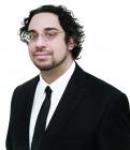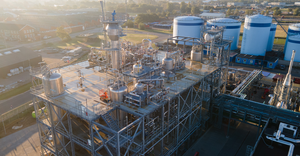Day two of the Global Waste Management Symposium being held at the Hyatt Regency Indian Wells (Calif.) Resort & Spa featured another round of insightful and provocative presentations covering all aspects of the waste and recycling industry.
Corrections: Rich Thompson's name was spelled incorrectly. The story also incorrectly stated that Republic transported ebola waste across state lines. The waste was only transported within the state of Texas. Both errors have been corrected in the story body below.
Day two of the Global Waste Management Symposium being held at the Hyatt Regency Indian Wells (Calif.) Resort & Spa featured another round of insightful and provocative presentations covering all aspects of the waste and recycling industry.
Included in the mix were 10 observations for the next 10 years in the solid waste industry from Stifel’s Michael E. Hoffman and details from EREF’s groundbreaking new research analyzing the state of the United States’ municipal solid waste stream.
Here are key takeaways from some of Tuesday’s sessions.
A wide ranging session on waste management planning included kicked off with James Levis, from NC State University, detailing the development of a Solid Waste Optimization Life-Cycle Framework (SWOLF). “The research objective was to develop a framework to evaluate solid waste system in light of changes in composition and policy,” Levis said.
EREF President & CEO Bryan Staley presented the organization’s new study on the state of U.S. MSW. Among the findings is that 88 percent of material at composting facilities is MSW. Of that, 90 percent of the feedstock is green waste. Only 8 percent is food waste.
EREF’s count of MSW facilities vs previous estimates. #gwms16 pic.twitter.com/PtPKyBY9Us
— David Bodamer (@DavidBodamer) February 2, 2016
EREF CEO Bryan Staley: #EREF research shows majority of #MSW goes to #landfill (66%) #GWMS16 pic.twitter.com/9sZJGnFfu8
— EREF (@EREFnews) February 2, 2016
Republic Services’ Rich Thompson reported on the firm’s experience handling, processing and disposing of some of the Ebola waste in U.S. The episode triggered political scrutiny, fear and media attention. But eventually four tons of waste was able to be transported by Stericycle from Dallas to Galveston, Texas, for treatment. Then Republic transported the resulting ash to its landfill in Galveston.
Hassan Mofadel, of Kenana Suger Company, traveled for more than 20 hours to attend the GWMS. He presented on the state of solid waste management in Khartoum, Sudan. There, much of the industry remains informal with waste pickers combing through piles of garbage to recover and recycle useful materials. Overall, 82 percent of the city’s waste stream is organics. There are 4,444.99 metric tons of MSW generated per day. Mofadel said there is an opportunity for the private sector to organize Sudan’s waste management industry with government support. However there are risks, including instability and weak collaboration between the federal and local governments that would need to be overcome.
A session on anaerobic digestion delved deeply into the state of the technology and its use across the United States.
Mark Greene, of O’Brien & Gere LLC, talked about co-digestion of food wastes at water resource recovery facilities (WRRF). He said the goal for net zero is driving WRRF's to consider co-digestion and adding outside feed sources to existing plants.
EREF’s Staley laid out some of the organization’s research on the state of organics waste and anaerobic digestion. The group found that there are currently 180 facilities accepting MSW organics. Of those, 16 percent are standalone. Those process 52 percent of the total tonnage. Another 84 percent of facilities are co-digestion plants on farms or waste water treatment plants. Those process 48 percent of the MSW tonnage going to anaerobic digestion. Overall, 87 percent of the feedstock is food waste, 8 percent is fats, oils & greases and five percent is green waste.
#EREF research shows where #MSW #organics are being managed across the US by region in 2013 #GWMS16 pic.twitter.com/zwXf5RA1MC
— EREF (@EREFnews) February 2, 2016
Organics-related policy identified by #EREF at #GWMS16 food #waste pic.twitter.com/0VR0bwkJeT
— EREF (@EREFnews) February 2, 2016
#EREF CEO Bryan Staley: What it will take to meet the @EPA food #waste goal #GWMS16 #organics pic.twitter.com/V728idYXwY
— EREF (@EREFnews) February 2, 2016
Stifel’s Michael E. Hoffman was the speaker at lunch. He laid out the economic outlook and solid waste fundamentals. Hoffman pointed to the solid waste cycle having three phases. Phase I featured recovering landfill volume driven by consistent housing starts. That began in 2014. Phase II featured small container weights turning positive. This began in the summer of 2013. And phase III is service interval upgrades. Those turned positive in 2015.
Hoffman's 10 observations over 10 years @Stifel #gwms16 pic.twitter.com/jLO4H66dKO
— Waste360 (@Waste360) February 2, 2016
Hoffman’s summary. #gwms16 pic.twitter.com/F2cOJcrLu5
— David Bodamer (@DavidBodamer) February 2, 2016
The symposium is produced by Waste360 along with strategic partners the Environmental Research and Education Foundation and the National Waste & Recycling Association.
About the Author(s)
You May Also Like




